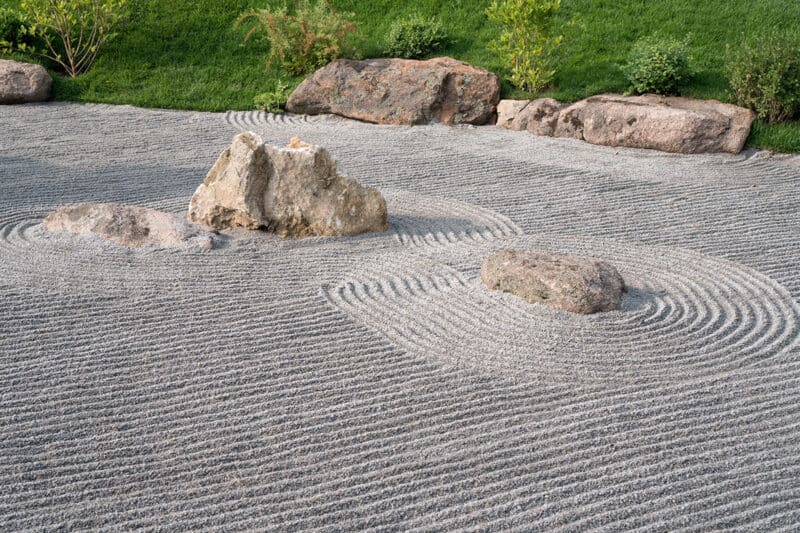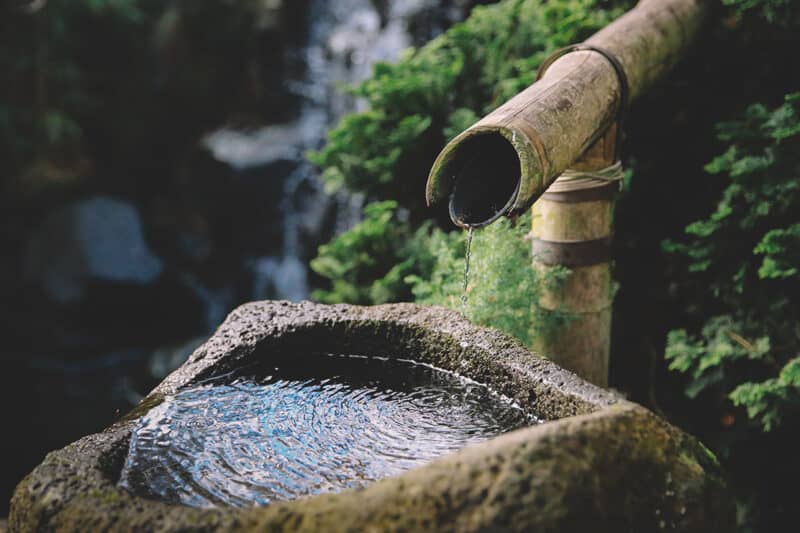How to Create Your Own Backyard Zen Garden
Dry Zen gardens (aka Japanese rock gardens) are popular in hot, arid growing zones but can be created anywhere. Gardens including water add an additional element of centering, though they’re a bit more involved.
You can cultivate your own bit of zen in any space you have available; you don’t need a massive spot. Let’s get started!
Key Elements of a Zen Garden
Unlike most other gardens, Zen garden spaces aren’t reliant on plants. In fact, some of the world’s most beautiful Zen gardens don’t have any plants at all!

Instead, they contain certain elements that mirror the energies found in nature. You don’t need to use all the ones listed here, of course. Just choose the ones you feel can help you achieve stillness and inner peace.
Some of the key elements you may wish to work into your design include:
Preparation
Before you start making your Zen garden, you’ll need to clear out an appropriate space. Remove any old plants, unless there are a couple of trees that you really like. You can incorporate those into your design instead of hacking them down.
Once you’ve dug up old plants and cleared away the detritus, make sure the ground is leveled. Then, put down landscaping fabric or another weed-deterring ground cover. The last thing you want is a bunch of dandelions and crabgrass poking up through your carefully curated designs.
Sand
If you have a fair bit of space to create your Zen garden, then find a good resource for white sand or fine gravel. You’ll need a lot of it.
The sand represents purity and is raked into ripples to represent water. Alternatively, whether raked or left smooth, it evokes a sense of sacred emptiness.
In other words, you’re trying to recreate the space between breaths or the stillness one aims to achieve when one quiets their racing thoughts.
Rocks
Have you ever tried to carry a huge, heavy rock for any great distance? Then you probably already have a sense of what rocks represent in a Zen garden.
Rocks, referred to as Ishi, represent strength and endurance. Are you working in a large space? Then head over to your local hardware store or building center. See what they have available, and decide what kind of aesthetic you’d like for your space.
Organic textures and shapes work beautifully in a garden that’s in harmony with flowing natural elements around it. Alternatively, sleek marble can look fantastic in a minimalist setting.
Check to see your options and let them (and your own leanings) inform your design decisions.
Once your elements, place them asymmetrically in the sand or gravel. Then rake that material around them in interesting patterns. Feel free to place others around the garden, in a patch of moss, or under a tree, or wherever it feels right to do so.
Water

It’s entirely up to you whether you’d like to include water in your garden. Some Zen garden aficionados prefer a dry aesthetic. They might not even have plants around but focus entirely on sand, gravel, rocks, and wood.
Others, however, revel in the energy that a water element can provide.
If you have the space for it, consider sinking a pond into your Zen design. Hey, if you’re working on a massive scale, you could even get a waterfall sort of thing going.
That said, if you—like most readers—have a smaller space to work with, then choose an appropriately sized water element. Wooden barrel ponds look great in many environments.
Alternatively, you could install a small fountain or one of those archway thingers that creates a curtain of water.
Plants
What kind of plants do you envision for this kind of space? Would you like dense, lush greenery around the periphery? Or are you aiming for simplicity?
If it’s the former, consider creating tiered plantings in a few key spaces. Try a large tree that has a couple of shrubs beneath it. Then plant some creeping plants around the bottom, so it spreads out organically.
Below are just a few species you may want to incorporate:
- Pine
- Juniper
- Yew
- Cedar
- Japanese Maple
- Ferns
- Azaleas
- Rhododendrons
- Wisteria
- Peonies
- Bamboo
- Pachysandra
- Creeping Thyme
- Moss (so much moss)
If you have a pond in your garden, try planting water-loving plants around the periphery. Get some lotuses or other water lilies growing in there too.

Comments
Post a Comment